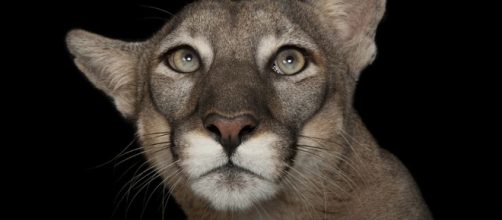Joel Sartore as a photographer at National Geographic has collected over 6,500 pictures of very different animal species, with one trait in common: they are all at risk of extinction. Sartore’s objective is to create an immense archive, in order to raise awareness of this phenomenon among the public opinion. The project, called the Photo Ark, has been already projected on the Empire State Building in New York, as well as on Saint Peter’s Basilica in Rome.
The Photo Ark project
Joel Sartore started taking pictures for his ark in 2005, at age 42, after his wife, Kathy, was diagnosed with breast cancer.
Luckily, Kathy is now well and fine, but that moment signified a profound change in the photographer’s mindset, as he was faced with the shortness and fragility of life. Sartore remembers that, while staying at home and taking care of his wife and three children, the question of how it was possible that people seemed so careless of the fact that by the turn of the next century the world could lose half of all animal species. This began to haunt him.
As a consequence, Sartore decided to take on himself the responsibility to give a face, if not a voice, to endangered species by making a series of portraits that would give people a chance to look the animals in the eyes and see all the beauty, grace, and intelligence that all creatures on Earth share.
The portraits are simple and clean, with the animal in close-up. The black and white backgrounds make it impossible to discern dimensions. This choice is symbolic, as it aims to convey a message of equality: the tiny ant has the same importance and majesty as the huge elephant. The message is all creatures are equals and equal care should be taken of them.
Endangered species
Currently, there are about 12,000 animal species in human care around the world. The WWF list starts with the Amur leopard, to continue with the black rhino, the Bornean orangutan, and the Cross River gorilla. There are already nineteen critically endangered species, and twenty-five endangered: among them are elephants, tigers, whales, pandas, dolphins, lions and many more animals we used to draw as kids.
But will our children be able to do the same?
Sartore believes all animal species have a basic right to exist: human activities are directly or indirectly prejudicing the survival of many of them and it is, therefore, our responsibility to prevent their disappearance from occurring. Each species is fundamental to maintain the ecosystem and, consequently, for the survival of humankind. We all know we need bees to save us from starvation, but also less popular animals as bats play a key role as they keep insects under control. Plankton seems too minuscule to be cared about, but blooms of plankton are visible from the space, they provide half of the oxygen we breathe and sustain the life of billions of marine creatures.
Sartore still has almost half of his ark to fill in with animals, but his intention is to complete it in the next 15 years. His goal is to present the world’s biodiversity in all its splendour and, hopefully, to make people start caring more about saving animals - while we still have time. To conclude, I would like to share Sartore’s message: the future of life on Earth is a crucial issue that deserves people’s attention, now as never before. You too can make a difference and contribute to the protection of endangered animals, by sharing the photos (joelsartore.com) and engaging in activities devoted to saving species and habitats.


